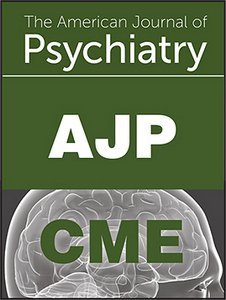“立即反弹”移动应用程序的随机对照试验,以减少灾后创伤后压力、抑郁情绪和睡眠障碍的症状。
IF 15.1
1区 医学
Q1 PSYCHIATRY
引用次数: 0
摘要
目的提高灾后心理健康的成本效益、可扩展的干预措施具有巨大的公共卫生利益。作者研究了移动应用程序“立即恢复”(BBN)与增强常规护理应用程序(EUC)的效果。方法对2017年和2018年受飓风“哈维”、“厄玛”、“玛丽亚”、“佛罗伦萨”或“迈克尔”影响的1357名成年人进行了一项基于人群的试验。如果参与者年龄≥18岁,可以使用可上网的设备,会说英语,并且居住在受飓风影响的地区,则符合条件。BBN旨在解决创伤后应激、抑郁和睡眠障碍的症状,使用基于行为和认知原则的循证技术。测量抑郁、创伤后应激和睡眠症状。结果参与者对BBN和EUC应用的使用情况相似。BBN用户的积极参与度显著高于EUC用户(d=0.31),但BBN用户更积极地参与应对技能活动,而不是那些旨在促进行为改变的耗时元素。在两种情况下均观察到中度症状减轻;基线后3个月评估的Cohen’s d值在BBN组为0.49 - 0.60,在EUC组为0.36 - 0.41。潜在变化模型显示,BBN使用者比EUC使用者在抑郁、睡眠困难和创伤后应激障碍症状方面有显著更大的减轻,这些差异在基线后6个月和12个月的评估中保持不变。结论人口影响是由覆盖面和有效性驱动的。BBN的潜在覆盖范围很大,这增加了在人口层面产生影响的机会,但每个用户的症状减少幅度不大。通过在更广泛的卫生保健战略中嵌入数字卫生资源,可以改善对每个用户的影响。本文章由计算机程序翻译,如有差异,请以英文原文为准。
Randomized Controlled Trial of "Bounce Back Now," a Mobile App to Reduce Post-Disaster Symptoms of Posttraumatic Stress, Depressed Mood, and Sleep Disturbance.
OBJECTIVE
There is tremendous public health interest in cost-efficient, scalable interventions to improve post-disaster mental health. The authors examined the efficacy of Bounce Back Now (BBN), a mobile application, versus an enhanced usual care app (EUC).
METHODS
A population-based trial was conducted with a diverse sample of 1,357 adults affected by Hurricane Harvey, Irma, Maria, Florence, or Michael in 2017 and 2018. Participants were eligible if they were ≥18 years of age, had access to an Internet-accessible device, were English speaking, and lived in a hurricane-affected area. BBN is designed to address symptoms of posttraumatic stress, depression, and sleep disturbance using evidence-based techniques grounded in behavioral and cognitive principles. Depressive, posttraumatic stress, and sleep symptoms were measured.
RESULTS
Participants' accessing of the BBN and EUC apps was similar. Active engagement was significantly greater among BBN users than EUC users (d=0.31), but BBN users engaged more actively in coping skills activities than in more time-intensive elements designed to promote behavior change. Moderate symptom reduction was observed in both conditions; Cohen's d values for the 3-month postbaseline assessment ranged from 0.49 to 0.60 in the BBN condition and from 0.36 to 0.41 in the EUC condition. Latent change models revealed that BBN users had significantly greater reductions in depression, sleep difficulty, and PTSD symptoms than EUC users, and these differences were maintained at the 6-month and 12-month postbaseline assessments.
CONCLUSIONS
Population impact is driven by reach and effectiveness. The potential reach of BBN is high, which heightens opportunity for population-level impact, but per-user symptom reduction was modest. Per-user impact may be improved by embedding digital health resources in the context of a broader health care strategy.
求助全文
通过发布文献求助,成功后即可免费获取论文全文。
去求助
来源期刊

American Journal of Psychiatry
医学-精神病学
CiteScore
22.30
自引率
2.80%
发文量
157
审稿时长
4-8 weeks
期刊介绍:
The American Journal of Psychiatry, dedicated to keeping psychiatry vibrant and relevant, publishes the latest advances in the diagnosis and treatment of mental illness. The journal covers the full spectrum of issues related to mental health diagnoses and treatment, presenting original articles on new developments in diagnosis, treatment, neuroscience, and patient populations.
 求助内容:
求助内容: 应助结果提醒方式:
应助结果提醒方式:


